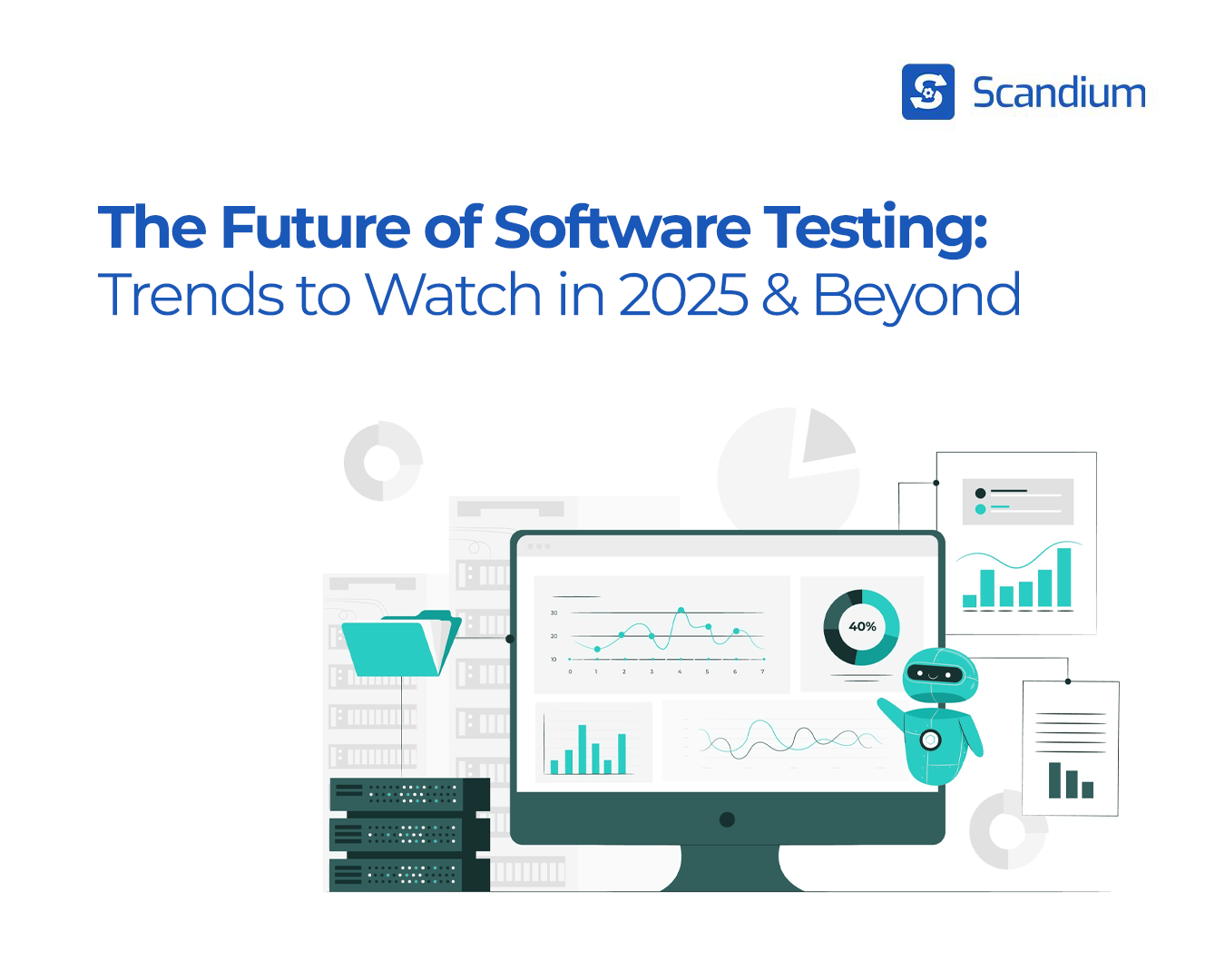
Software testing has always been a dynamic field, but as we head deeper into 2025, change feels faster and more profound than ever. New technologies, shifting user expectations, and evolving development practices are reshaping what it means to test software effectively.
At Scandium, where we champion no-code test automation to empower teams of all skill levels, we’re paying close attention to the trends shaping tomorrow’s testing landscape. Here’s a look at what testers, developers, and product teams should have on their radar.
1. AI-Powered Testing Moves Mainstream
Artificial intelligence isn’t just a buzzword anymore — it’s reshaping testing workflows. Tools now use machine learning to:
- Predict risky areas of code
- Automatically generate test cases
- Analyze test results to suggest fixes
- Optimize test coverage and reduce redundant cases
By 2025, AI will handle even more of the grunt work, freeing human testers to focus on strategy, creativity, and exploratory testing. Scandium is already ahead of the curve, with AI-powered no-code automation that reduces manual effort, optimizes test coverage, and accelerates delivery, helping teams work smarter today, not just tomorrow.
2. Shift-Left and Shift-Right Practices Deepen
It’s no longer enough to test just before release. Teams are increasingly embracing shift-left (earlier testing) and shift-right (post-release monitoring) to catch issues sooner and gather real-world feedback faster.
In 2025 and beyond, expect more tools that blend:
- Automated tests triggered directly from code commits
- Integrated API and microservices testing
- Continuous monitoring of user experience in production
The key? Building a feedback loop where QA, Dev, and Ops work seamlessly together, and no-code platforms like Scandium make it easier for everyone to participate, not just the most technical team members.
3. Accessibility and Inclusive Testing Go Beyond Compliance
Accessibility (A11Y) testing is shifting from a checklist item to a core quality pillar. With increasing regulatory pressure (hello, European Accessibility Act 2025) and rising user expectations, organizations are realizing that inclusive design is not optional.
Tools and testers that can integrate accessibility checks into every phase — from design to development to post-launch — will be at the forefront. Expect to see more automated A11Y test capabilities, more education for testers, and more focus on real-world usability, not just technical compliance.
4. API-First Testing Becomes the Norm
Modern software isn’t just web pages or mobile apps, it’s a web of interconnected APIs. Testing is following that shift. By 2025, API-first testing will be a priority for many teams, with testers focusing on:
- Validating backend services directly
- Ensuring third-party integrations don’t break workflows
- Automating contract testing to catch changes early
Scandium’s API testing capabilities are designed to help teams stay ahead, making it easy to drag-and-drop API requests, handle dynamic data, and diagnose failures, all without needing to write scripts.
5. Democratization of Testing Through No-Code
Finally, one of the most exciting trends: testing is no longer just for testers. With no-code tools, product managers, designers, marketers, and other non-technical stakeholders can now:
- Record and replay automated tests
- Validate critical user flows
- Participate in quality discussions without needing to code
This democratization is accelerating product delivery by spreading quality ownership across the entire team, and Scandium is proud to be part of that movement.
Looking Ahead: Staying Future-Ready
The future of software testing is fast, collaborative, and AI-augmented. Teams that embrace these trends will deliver higher-quality products, faster, while making their testing processes more inclusive and efficient.
At Scandium, we’re committed to helping you stay ahead — whether you’re testing web, mobile, or APIs, whether you’re technical or non-technical, whether you’re scaling up or just getting started.
Check out Scandium’s platform and see how we’re making test automation simpler, smarter, and more accessible.
